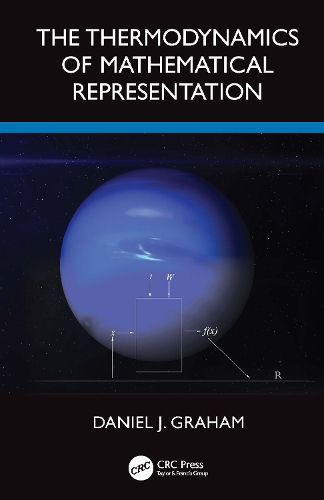Readings Newsletter
Become a Readings Member to make your shopping experience even easier.
Sign in or sign up for free!
You’re not far away from qualifying for FREE standard shipping within Australia
You’ve qualified for FREE standard shipping within Australia
The cart is loading…






Thermodynamics is the physical science surrounding work, heat, and relationships across fundamental quantities, and situates itself near the center of multiple disciplines through its generality and timelessness. Its laws required no rewriting after the twentieth century revolutions of quantum mechanics, relativity, and solid state physics, just to name three subjects. The nine chapters of this book make appeal to thermodynamic notions and laws to get under the hood of mathematics-the language of the physical sciences-without just echoing things best said and written in math books. It takes a system to learn about another system-we all need thermometers, voltmeters, and other gadgets to get to know objects of interest. But just as critical are the numbers and functions we put to the task, however relegated they are to computers in the modern day for the heavy lifting. To be sure, mathematical representations like x = 1/2, 5.2, ?, e, etc., and f(x) = x2, sin(x), etc., are never in physical contact with the solids, liquids, and gases that draw our attention, but they are as impacted by the same natural laws as the lab apparatus that is.
This book shows how the thermodynamic laws impact our number systems. The laws affirm that we have direct access to a vanishingly small fraction of the real numbers. They further establish that the real numbers present a maximum-evolved system impacting all matters of computation, graphing, differentiation, and integration. For completeness, one of the chapters includes cases where the thermodynamic laws have little if anything constructive to say about representations in mathematics.
The book presents a novel perspective to students and teachers in the physical sciences, biology, and mathematics, with the goal of enriching classroom and seminar hours. The chapters are self-contained and written informally, and readers with rudimentary knowledge of energy, numbers, and functions should handle the material well.
$9.00 standard shipping within Australia
FREE standard shipping within Australia for orders over $100.00
Express & International shipping calculated at checkout
Thermodynamics is the physical science surrounding work, heat, and relationships across fundamental quantities, and situates itself near the center of multiple disciplines through its generality and timelessness. Its laws required no rewriting after the twentieth century revolutions of quantum mechanics, relativity, and solid state physics, just to name three subjects. The nine chapters of this book make appeal to thermodynamic notions and laws to get under the hood of mathematics-the language of the physical sciences-without just echoing things best said and written in math books. It takes a system to learn about another system-we all need thermometers, voltmeters, and other gadgets to get to know objects of interest. But just as critical are the numbers and functions we put to the task, however relegated they are to computers in the modern day for the heavy lifting. To be sure, mathematical representations like x = 1/2, 5.2, ?, e, etc., and f(x) = x2, sin(x), etc., are never in physical contact with the solids, liquids, and gases that draw our attention, but they are as impacted by the same natural laws as the lab apparatus that is.
This book shows how the thermodynamic laws impact our number systems. The laws affirm that we have direct access to a vanishingly small fraction of the real numbers. They further establish that the real numbers present a maximum-evolved system impacting all matters of computation, graphing, differentiation, and integration. For completeness, one of the chapters includes cases where the thermodynamic laws have little if anything constructive to say about representations in mathematics.
The book presents a novel perspective to students and teachers in the physical sciences, biology, and mathematics, with the goal of enriching classroom and seminar hours. The chapters are self-contained and written informally, and readers with rudimentary knowledge of energy, numbers, and functions should handle the material well.